The Nilgiri Marten (Martes gwatkinsii) is the marten species only native to southern India. The elusive Nilgiri marten is the only marten species found in India.
Nilgiri Marten Habitat
Nilgiri martens are only found in southern India. It lives in the hills of the Nilgiris and parts of the Western Ghats. They are distributed from the Travancore Kerala, Nilgiris, and Kodagu north to the Charmadi ghats, Karnataka. Nilgiri martens live in evergreen forests and montane forest-grassland mosaics. They also occur in tea, acacia, coffee, cardamom, and wattle plantations.
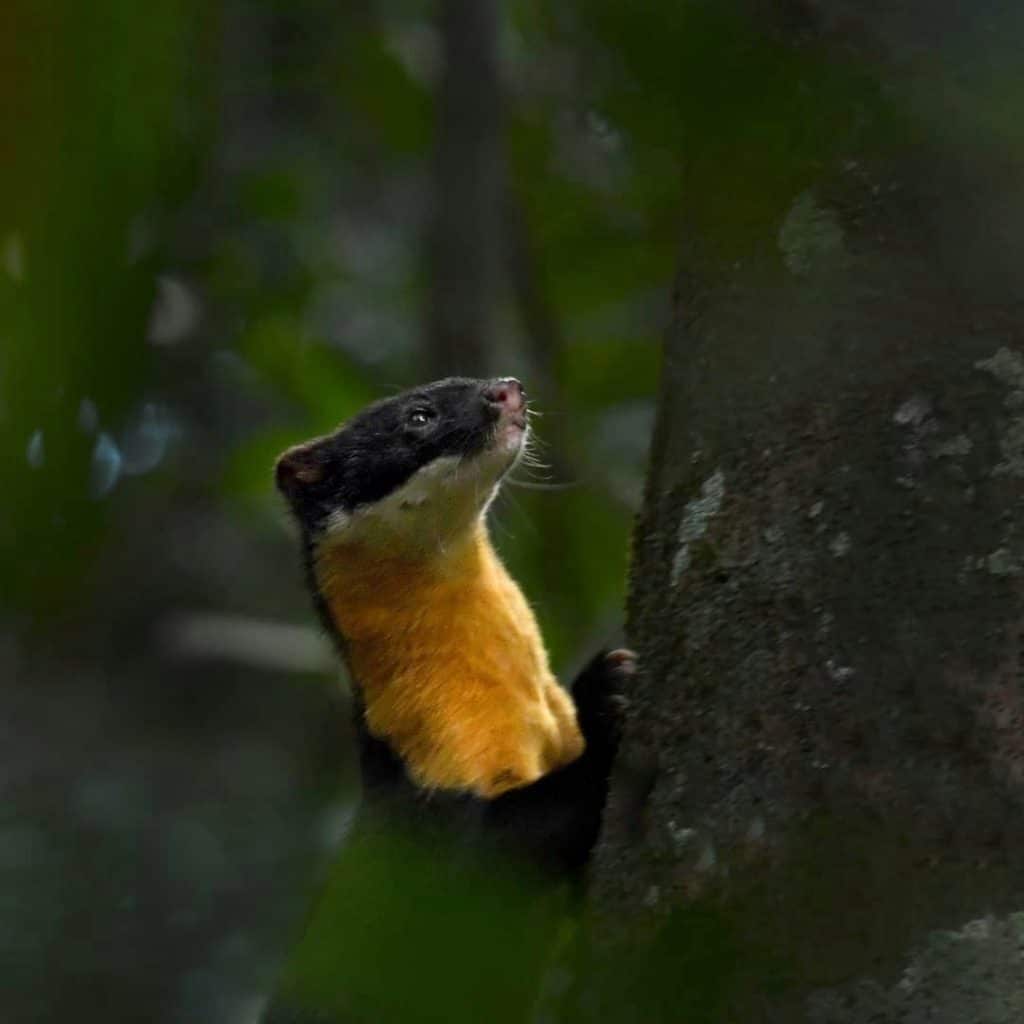
The Nilgiri Marten is locally known as Mara naai, it means tree-dwelling dog in Tamil and Malayalam.
The Nilgiri Marten is a small omnivorous mammal from the Western Ghats—occurring at altitudes ranging from about 150 – 2200 m. It is similar to the more commonly seen and more widely distributed Yellow-throated Marten (M. flavigula), and belongs to the same family (Mustelidae) as the badgers and weasels.
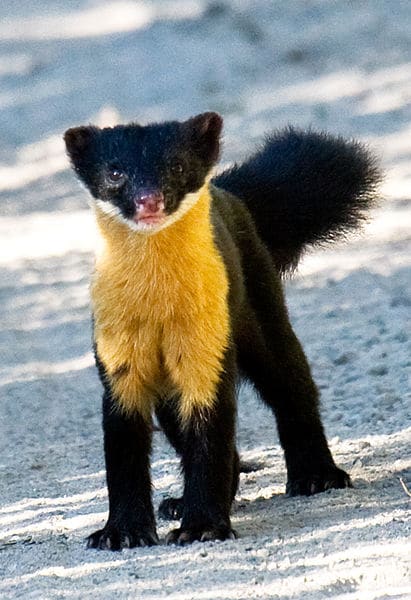
Nilgiri Marten Behaviour
Although it is a species active during the day (diurnal), the Nilgiri Marten is rarely seen. It is extremely rare because only a few thousand have been left in the wild, it is listed as Vulnerable on the IUCN Red List.
Because of its rarity, only a handful of biologists and naturalists have had the opportunity of having sighted one of the most elusive and fascinating species of this small mammal.
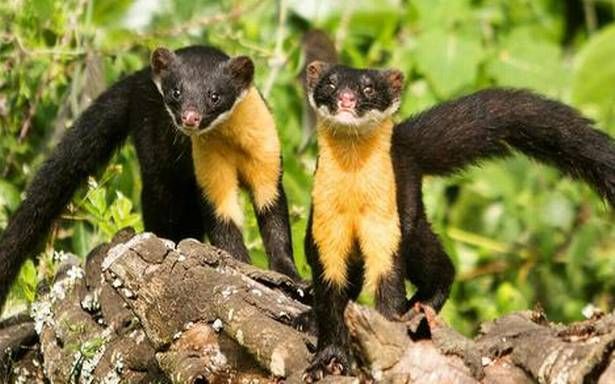
Appearance and Size
The Nilgiri marten is a beautiful animal. They are deep brown from head to rump, with the forequarters being almost reddish. The bright throat ranges in color from yellow to orange. Nilgiri Martens has a distinctly bright yellowish-orange patch extending from throat to breast with a deep brown to black body coat and a long bushy tail.
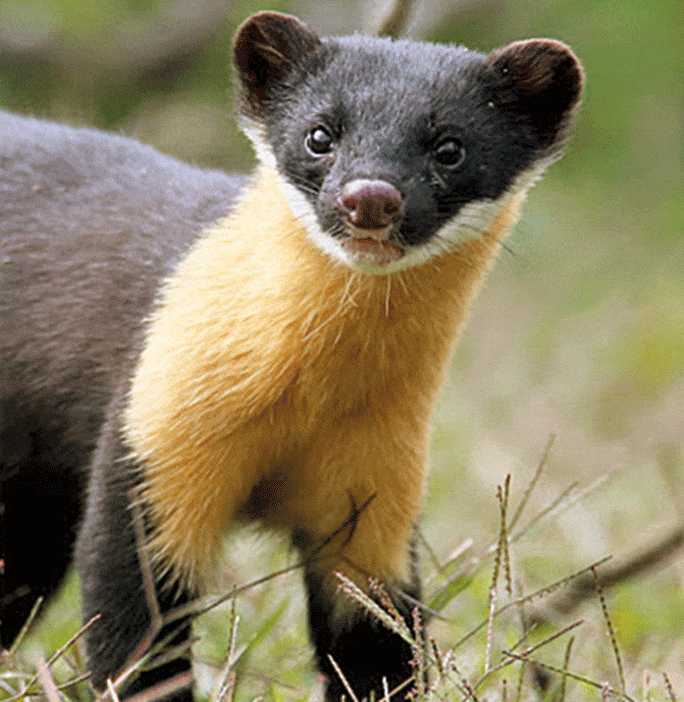
Nilgiri Marten is a medium-sized animal weighing approx 2kgs and 55-65 cm in length with a characteristically pointed head, long neck, and a slender body. It can be sometimes mistaken for the colorful Indian giant squirrel because of its similar color and size. But both are entirely different species.
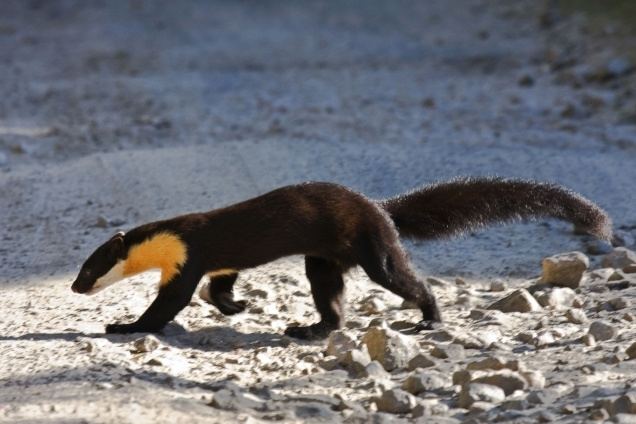
Diet
They eat birds, small mammals, and insects such as cicadas, small lizards, and also mouse deer and a small part of their diet is plant-based, they also raid beehives. They are social and spend their time hunting in groups.
The main threat to Nilgiri martens is habitat conversion for constructing roads and dams. They are vital for the ecosystem as the Nilgiri martens eat seeds as part of their varied diet and are eventually dispersed throughout the forest by way of feces.
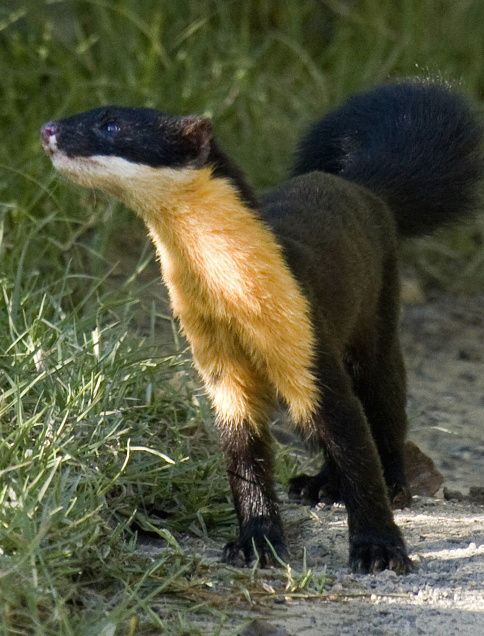
The rare, elusive, and fascinating creature, the sighting of a Nilgiri Marten has always been considered a once-in-a-lifetime opportunity for wildlife biologists, photographers, and enthusiasts. It is also the most unstudied species, very little knowledge has been gathered on this amazing animal.

